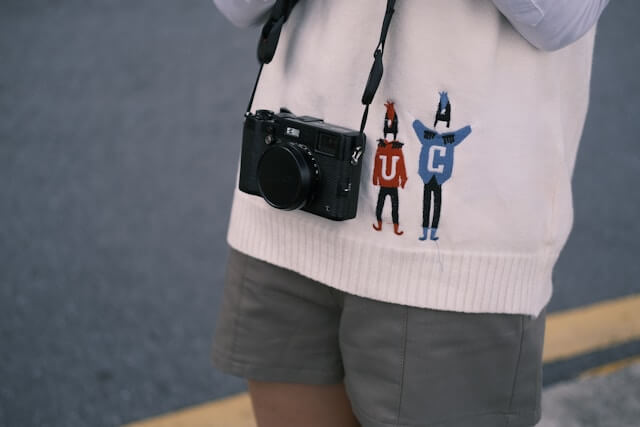The fashion calendar has always been relentless—six-month lead times for a single collection, countless revisions, and a sampling process that bleeds cash. Today’s generative-AI tools promise to compress those tasks from months to days, but only when they move beyond flashy mood-board generators and plug directly into a brand’s daily workflow. Enter the AI fashion designer, an intelligent layer that sits inside product-lifecycle software and accelerates every creative step from trend sensing to final tech pack.
Plug-and-Play Adoption Through SaaS Platforms
All of these capabilities sound expensive—until you realize they now arrive via lightweight SaaS. Platforms like ApparelMagic integrate an ai fashion designer module that sits on top of existing product data, so a mid-sized label can experiment without hiring machine-learning engineers.
The tool learns from past collections, understands seasonality, and proposes fabric substitutions that match price tiers. Crucially, its outputs are native to the PLM, meaning factories receive ready-to-cut files rather than art-room PDFs.
From Inspiration to Concept in Minutes, Not Weeks
Traditional concepting starts with seasonal research, manual sketching, and an anxious Share-With-Merch meeting. Generative models invert the timeline. A designer can feed the system a handful of reference images, desired silhouettes, and sustainability constraints; within minutes the AI returns hundreds of 2-D or even textured 3-D looks that respect brand DNA yet push into unexplored territory.
McKinsey estimates that generative AI could add as much as $150 billion to fashion’s operating profit by freeing creatives from low-value tasks and speeding time-to-market by up to 50 percent.In the studio, that means the line-planning whiteboard fills in days instead of weeks, and designers pivot immediately when merchandising wants a new color story.

Sampling Without Physical Samples
The next bottleneck—prototype garments—usually requires fabric procurement, pattern making, and at least three rounds of couriered samples. An AI fashion designer short-circuits the process by generating production-grade 3-D assets that slot straight into virtual fit sessions. True-to-life cloth simulation lets patternmakers detect pulling at the armhole or excess ease in the hip before a single bolt is cut.
Business of Fashion’s 2025 industry survey found that forty-one percent of brands already using generative AI report double-digit reductions in sample iterations, with some cutting physical samples by half. Fewer samples mean less material waste, quicker approvals, and a smaller carbon footprint—benefits that resonate with both finance and sustainability teams.
Real-Time Collaboration Across the Supply Chain
Once concepts stabilize, tech designers and production managers need exact specs. An AI layer embedded in a product-lifecycle-management platform can auto-draft graded pattern pieces, suggest optimal seam constructions, and flag conflicts in BOMs. Because the model references historical vendor data, it can preload regional cost estimates or alternative trims when a preferred supplier is at capacity.
Vogue Business reports that brands deploying AI-augmented PLM tools see average lead-time cuts of thirty percent and better on-time vendor handoffs.The result is a creative pipeline where sketch feedback, cost engineering, and factory feasibility checks happen in a single conversation thread instead of a weeks-long email chain.
Hyper-Personalization at Scale
Generative design also unlocks a new revenue lever: micro-collections tailored to niche communities or even individual shoppers. Trained on past purchase data and social-media sentiment, the AI fashion designer can spin out small runs that match a subculture’s color palette or fit preferences and push them into print-on-demand workflows.
BoF’s State of Fashion 2025 notes that half of global fashion executives rank AI-driven product curation and personalization as the top strategic use case because it smooths decision fatigue for shoppers and boosts conversion. When the same engine generates the design and the marketing visuals, teams skip the time-consuming brief hand-off between departments.
Sustainability Moves from Slogan to System
Speed is only half the story; precision forecasting and instant sampling dramatically reduce waste. Every digital proto that replaces a physical sample saves fabric off-cuts, dye water, and shipping emissions. By simulating fabric utilization and SKU demand, AI can suggest smaller size curves or warn when a print layout will hike yardage by ten percent.
Brands that embed these guardrails see measurable gains: McKinsey’s model shows generative AI cutting material waste by up to eight percent across the product lifecycle, downstreaming to both ESG scores and margin.
Implementing the Future: A Phased Playbook
Brands that succeed with AI follow a pragmatic rollout. They start by feeding two seasons of CADs, spec sheets, and sell-through data into the model, then pilot it on a low-risk capsule. Designers compare AI sketches against their own and use voting rounds to teach the model brand nuance.
Next, they activate 3-D sample generation and invite key suppliers to the digital fitting room, cutting sample turns in half. Only after these early wins do they tackle hyper-personalization, ensuring supply-chain elasticity and legal guardrails are in place. Throughout, they police bias and copyright exposure via prompt logging and model versioning—controls Gartner bundles under its AI Trust, Risk, and Security Management framework.
Conclusion
Fashion’s creative engine has long been limited by physical sampling, iterative revisions, and siloed knowledge. An AI fashion designer removes those constraints, transforming inspiration into approved tech packs at unprecedented speed while shrinking waste and unlocking personalization.
Early adopters already report faster line planning, fewer samples, and collections that resonate because they are data-tuned from the first sketch. As generative tools embed directly in PLM suites, the question is no longer whether AI will reshape apparel workflows—it’s how quickly each brand will choose to accelerate.


